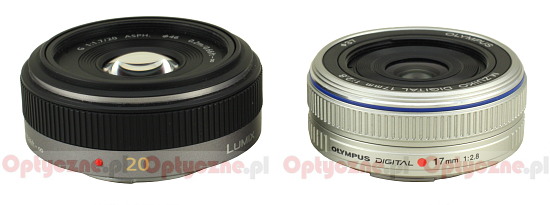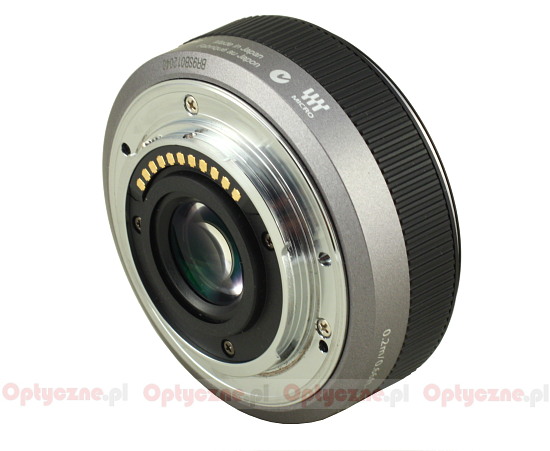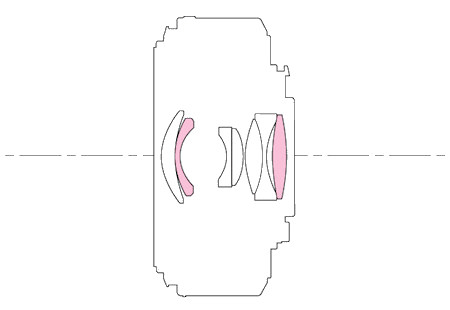Panasonic G 20 mm f/1.7 ASPH.
3. Build quality
 |
The comparison between the Panasonic and other systems’ „pancakes” (or almost „pancakes”) designed for full frame might be enlightening. You can compare these instruments easily looking at the next chart. The advantages of the tested lens become obvious at once – it is physically the lightest and the smallest; what’s more it features a minimum focus distance of 20 cm. The Ultron 2/40 for a change gives us a significantly shallower depth of field on full frame.
Please Support UsIf you enjoy our reviews and articles, and you want us to continue our work please, support our website by donating through PayPal. The funds are going to be used for paying our editorial team, renting servers, and equipping our testing studio; only that way we will be able to continue providing you interesting content for free. |
- - - - - - - - - - - - - - - - - - - - - - - - - - - - - - - - - - - - - - - - - - - - - - - -
The build quality of the tested lens is very solid. The device starts with a metal mount with 11 contacts inside; then we see a rear element with a diameter of about 16 mm. Immediately after the mount there is a fragment of casing covered with silvery plastics on which you can find the lens’s parameters, the name of the company and the information that it was made in Japan. Moving on, we meet a black, ribbed manual focus ring. It is about one centimeter wide and it is operated "by wire" so you drive the AF motor by turning the focus ring and you can’t focus without the lens being attached to a camera body which powers it. The ring works comfortably, though, allowing you very precise settings especially that running the whole distance scale (nowhere to be found by the way) needs a turn of about 200 degrees. It’s also worth adding that during the focusing the whole optical system moves forward or backward so the focal length of the lens remains unchanged.
 |
Behind the focus ring we see another narrow and silver fragment of the barrel and the lens ends right afterwards. Looking from the front we can notice the front element with a diameter of ca. 18 mm, surrounded by inscriptions about the lens’s parameters and a non-rotating filter thread, 46 mm in diameter.
The Panasonic LUMIX G 20 mm f/1.7 ASPH. consists of 7 elements in 5 groups. Two elements are aspherical (marked with pink colour in the picture below). In the middle there is also an aperture with seven diaphragm blades which can be closed down to f/16.

If you buy the tested lens you will get two caps and a cover included in box. The producer doesn’t anticipate any hood for it.






